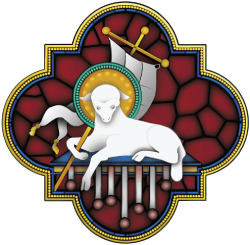From the Archives
From the September 29, 1923, issue of The Living Church
About fifty men, including half a dozen older boys, from nine churches of Norfolk and vicinity spent the weekend of September 16th in retreat at Williamsburg and Jamestown on the second annual pilgrimage to those ancient Virginia shrines, under the auspices of the Norfolk Assembly of the Brotherhood of St. Andrew.
Saturday afternoon the party motored to Williamsburg. College not having opened, the men were housed in Jefferson Hall, one of the new women’s dormitories of William and Mary College, which, with its modern equipment, including a swimming pool, was placed exclusively at their disposal. Meals were served in the college refectory, where Dr. J.A.C. Chandler, president of the college, personally acted as host to the visiting churchmen. In responding to a resolution of appreciation for his hospitality, Dr. Chandler promised the men for next year the use of the men’s new dormitory and the men’s new gymnasium and swimming pool now building.
The conference of churchmen was under the leadership of the Rev. Dr. William A.R. Goodwin, now of the William and Mary faculty, recently rector of St. Paul’s Church, Rochester, N.Y., and formerly rector and restorer of old Bruton Church, Williamsburg, Va. The theme of the meetings was The Divinity of Christ, and Our Fellowship With Him. On Saturday night was held in old Bruton a service of preparation for the early communion at Jamestown on the following morning. Dr. Goodwin, with his magnetism, earnestness, and spirituality, made very real to the men the nature of the Sacrament of which they were to partake at that historic spot.

At half past seven on Sunday morning, the men of the conference, with others of Williamsburg, knelt on the grass before the Robert Hunt memorial shrine at Jamestown for the service of Holy Communion, kneeling in the same spot where the early settlers in 1607 partook of the same Sacrament. With the sound of the river against the near shore and of the birds in the surrounding trees, the scene was reminiscent of those pioneer days of their church and nation. Instead of the gospel and epistle for the day, there were used the gospel and epistle for the Third Sunday after Trinity, which were said in that first celebration in America, when the Rev. Robert Hunt was the celebrant. The ancient silver chalice and paten of the old Jamestown Church were used in the service. These are now the heritage of old Bruton, as successor to the original church at Jamestown.
At eleven o’clock the visitors attended in a body the service at old Bruton, and the sermon was appropriate to their pilgrimage, Mr. Goodwin being in charge in the absence of the Rev. E. Ruffin Jones, the rector. In the afternoon a final brief service was held in the diminutive old Hickory Church at Toano.
The following telegram was sent from Williamsburg to the International Convention of the Brotherhood of St. Andrew’s that is about to assemble in Chicago:
“The Norfolk Assembly of the Brotherhood of St. Andrew, in retreat at Williamsburg and Jamestown, where the Brotherhood made pilgrimage during the Norfolk Convention two years ago, sends greetings from these ancient shrines of our church and nation to the Brotherhood’s great convention at its birthplace, praying that the Chicago convention may be fruitful in good works.”
The Rev. William A.R. Goodwin (1869-1939) served as rector of Bruton Parish Church in Williamsburg, Virginia, from 1903 to 1909 and 1926 to 1938, and is known as the father of Colonial Williamsburg. During his first tenure as rector, he oversaw a restoration of the historic church to its colonial form and appearance, in connection with the tercentary of the founding of the Virginia Colony at Jamestown.
When he returned to Williamsburg in 1923 to teach at the College of William and Mary, Goodwin was shocked by the deterioration of many colonial-era buildings during his time away from the city, and in 1924 he began an effort to purchase and restore buildings in the historic district, a project secretly funded by oil magnate John D. Rockefeller, an effort managed by the foundation now known as Colonial Williamsburg from the late 1920s. Colonial Williamsburg now manages a 315-acre district, which includes 89 18th-century buildings, one of the largest and most complete historic sites in North America.
The Robert Hunt Shrine, a bas-relief sculpture in a large brick frame designed by Ralph Adams Cram, was erected in 1922 by the Colonial Dames of America in the State of Virginia to commemorate the first celebration of Holy Communion in the English-speaking colonies of what is now the United States. It still stands in the grounds of Historic Jamestowne, part of the National Park Service’s Colonial National Historical Park.




